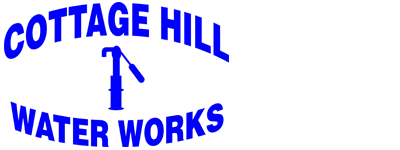Lead Service Line Inventory—
EPA's Lead and Copper Rule Revisions
In January 2021, the U.S. Environmental Protection Agency (EPA) issued Lead and Copper Rule Revisions (LCRR) that went into effect in December 2021. Group A Community and nontransient noncommunity (NTNC) water systems are required to follow the LCRR, which is located in 40 CFR 141. At the same time, the EPA announced that it was going to begin new rulemaking to update these same requirements, which they identified as the Lead and Copper Rule Improvements (LCRI).
What does this mean to CHWW? To comply with the LCRR, community water systems need to develop and submit a Lead Service Line Inventory (LSLI) to the state no later than October 2024; while continuing to comply with the monitoring, reporting, and treatment requirements of the prior version of the Lead and Copper Rule.
Our water system will dedicate efforts to review historic records and determine appropriate identification methods to obtain both private and utility owned service line information. CHWW members may see multiple technicians or contractors out on the system, inpsecting and labeling every single active meter location. Members can help by ensuring that the meter box is accessible and the area around the box is clear. A bush or tree may not hang over the meter box unless it clears the box at least six (6) feet. Fences will have to have an offset built around the meter box or a gate within three (3) feet of the meter box.
The Lead and Copper Rule (LCR) is a United States federal regulation that limits the concentration of lead and copper allowed in public drinking water at the consumer's tap, as well as limiting the permissible amount of pipe corrosion occurring due to the water itself. The U.S. Environmental Protection Agency (EPA) first issued the rule in 1991 pursuant to the Safe Drinking Water Act (SDWA). The EPA promulgated the regulations following studies that concluded that copper and lead have an adverse effect on individuals. The LCR limits the levels of these metals in water through improving water treatment centers, determining copper and lead levels for customers who use lead plumbing parts, and eliminating the water source as a source of lead and copper. If the lead and copper levels exceed the "action levels", water suppliers are required to educate their consumers on how to reduce exposure to lead. CHWW takes samples to test for lead and copper triennially. Click here for more information and steps you can take to reduce Lead in drinking water from the EPA.

